Cover
Title Page
Contents
Preface
1. Introduction
1.1. Filtering
1.2. History of Signal Filtering
1.3. Subject Matter of this Book
1.4. Outline of the Book
References
2. Filtering, Linear Systems, and Estimation
2.1. Systems, Noise, Filtering, Smoothing, and Prediction
2.2. The Gauss-Markov Discrete-time Model
2.3. Estimation Criteria
References
3. The Discrete-time Kalman Filter
3.1. The Kalman Filter
3.2. Best Linear Estimator Property of the Kalman Filter
3.3. Identification as a Kalman Filtering Problem
3.4. Application of Kalman Filters
References
4. Time-invariant Filters
4.1. Background to Time Invariance of the Filter
4.2. Stability Properties of Linear, Discrete-time Systems
4.3. Stationary Behavious of Linear Systems
4.4. Time Invariance and Symptotic Stability of the Filter
4.5. Frequency Domain Formulas
References
5. Kalman Filter Properties
5.1. Introduction
5.2. Minimum Variance and Linear Minimum Variance Estimation; Orthogonality and Projection
5.3. The Innovations Sequence
5.4. The Kalman Filter
5.5. True Filtered Estimates and the Signal-to-noise Ratio Improvement Property
5.6. Inverse Problems; When is a Filter Optimal?
References
6. Computational Aspects
6.1. Signal Model Errors, Filter Divergence, and Data Saturation
6.2. Exponential Data Weighting—A Filter With Prescribed Degree of Stability
6.3. The Matrix Inversion Lemma and the Information Filter
6.4. Sequential Processing
6.5. Square Root Filtering
6.6. The High Measurement Noise Case
6.7. Chandrasekhar-type, Doubling, and Nonrecursive Algorithms
References
7. Smoothing of Discrete-time Signals
7.1. Introduction to Smoothing
7.2. Fixed-point Smoothing
7.3. Fixed-lag Smoothing
7.4. Fixel-interval Smoothing
References
8. Applications in Nonlinear Filtering
8.1. Nonlinear Filtering
8.2. The Extended Kalman Filter
8.3. A Bound Optimal Filter
8.4. Gaussian Sum Estimators
References
9. Innovations Representations, Spectral Factorization, Wiener and Levinson Filtering
9.1. Introduction
9.2. Kalman Filter Design From Covariance Data
9.3. Innovations Representations With Finite Initial Time
9.4. Stationary Innovations Representations and Spectral Factorization
9.5. Wiener Filtering
9.6. Levinson Filters
References
10. Parameter Identifications and Adaptive Estimation
10.1. Adaptive Estimation Via Parallel Processing
10.2. Adaptive Estimation Via Extended Least Squares
References
11. Colored Noise and Suboptimal Reduced Order Filters
11.1. General Approaches to Dealing with Colored Noise
11.2. Filter Design with Markov Output Noise
11.3. Filter Design with Singular or Near-singular Output Noise
11.4. Suboptimal Design Given Colored Input or Measurement Noise
11.5. Suboptimal Filter Design by Model Order Reduction
References
A. Brief Review of Results of Probability Theory
A.1. Pure Probability Theory
A.2. Stochasitic Processes
A.3. Gaussian Random Variables, Vectors, and Processes
References
B. Brief Review of Some Results of Matrix Theory
References
C. Brief Review of Several Major Results of Linear System Theory
References
D. Lyapunov Stability
References
Author Index
Subject Index
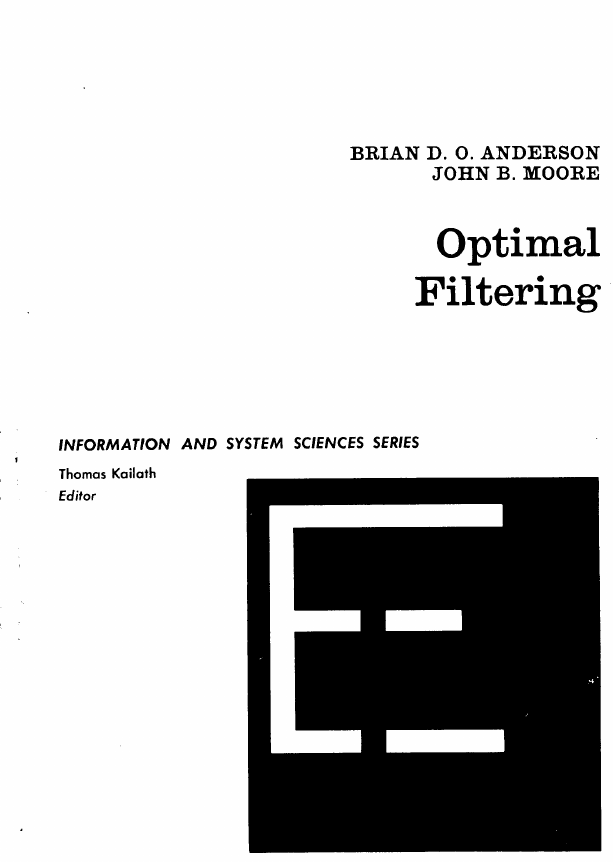
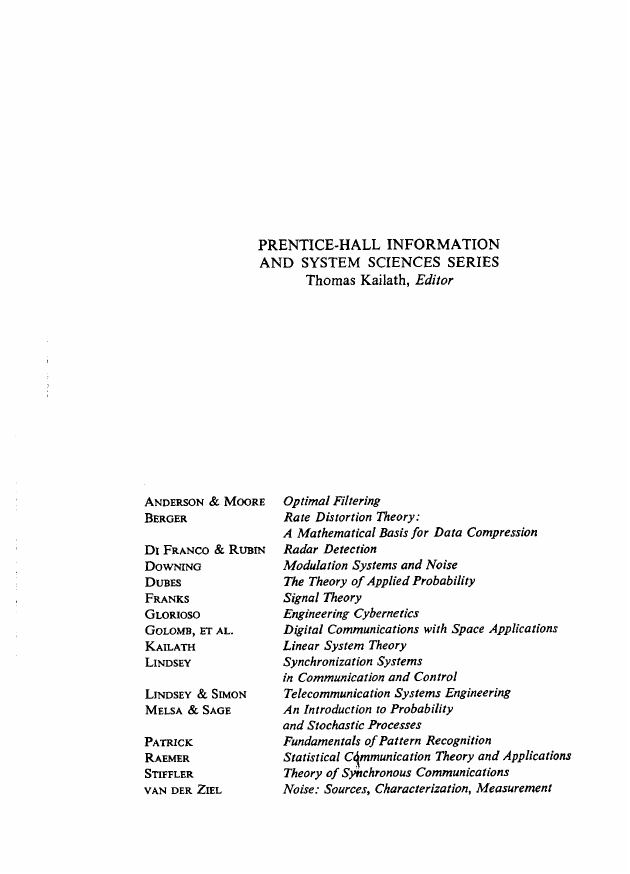
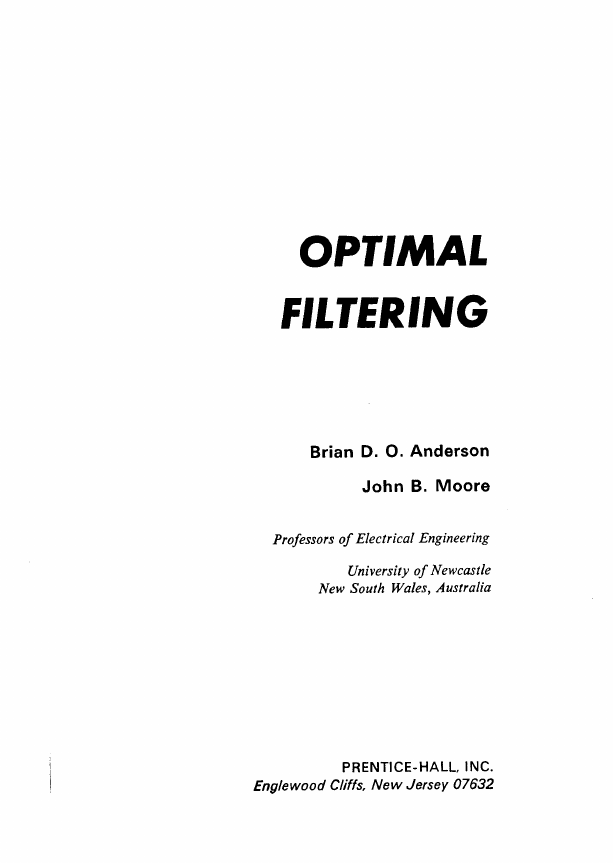
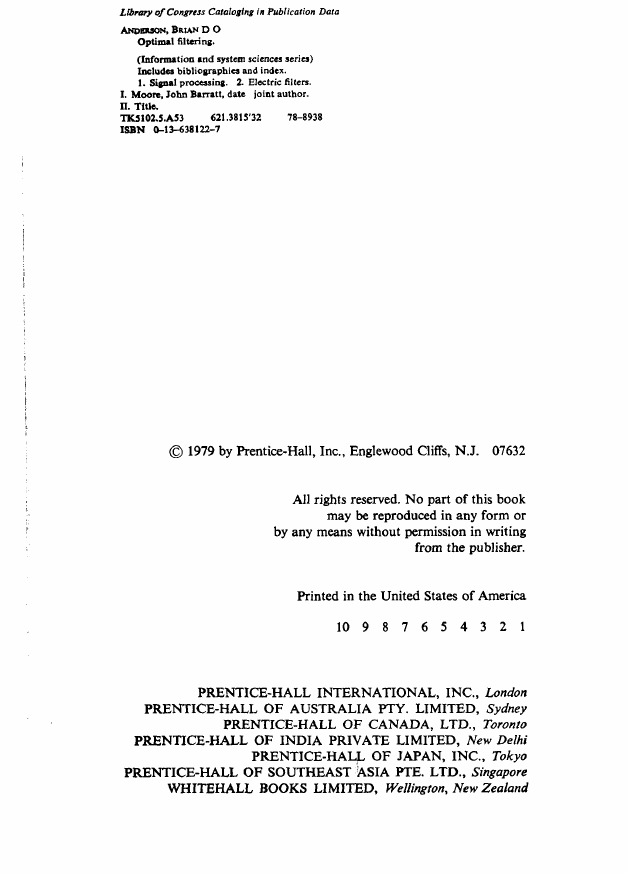
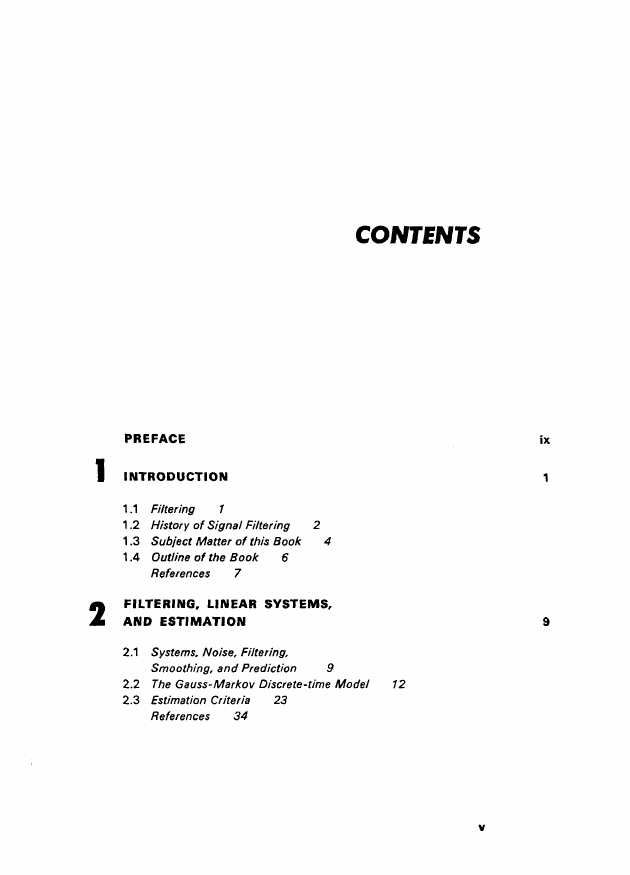
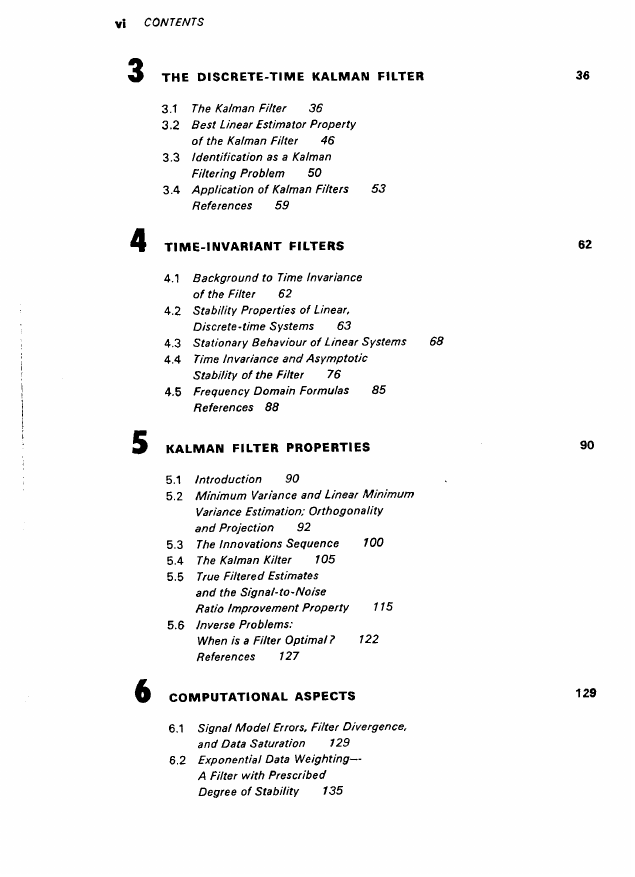
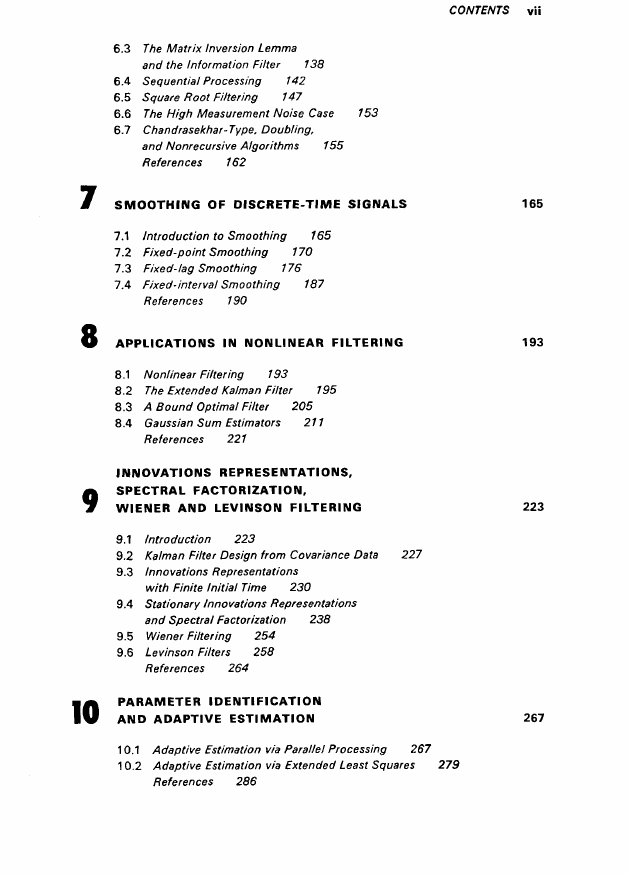
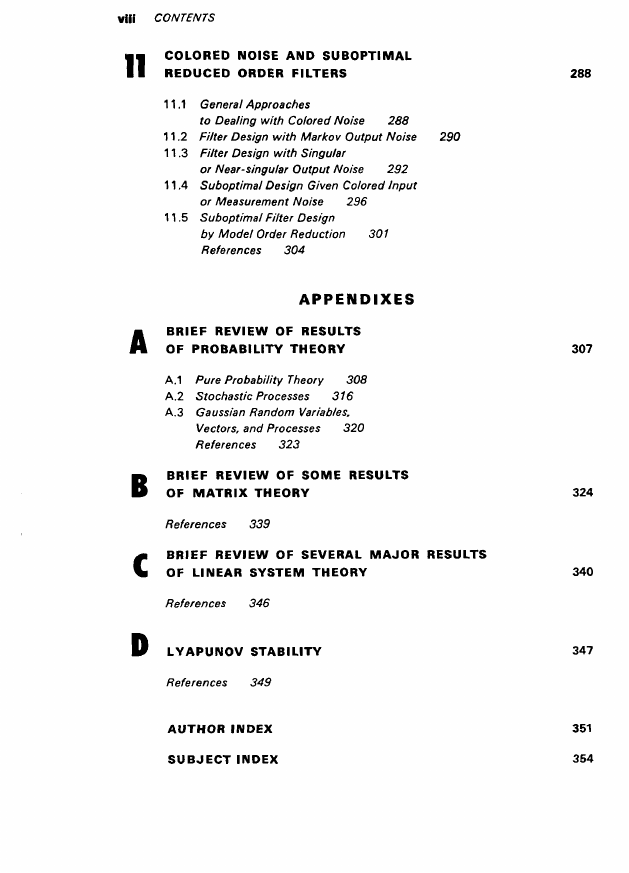








 2023年江西萍乡中考道德与法治真题及答案.doc
2023年江西萍乡中考道德与法治真题及答案.doc 2012年重庆南川中考生物真题及答案.doc
2012年重庆南川中考生物真题及答案.doc 2013年江西师范大学地理学综合及文艺理论基础考研真题.doc
2013年江西师范大学地理学综合及文艺理论基础考研真题.doc 2020年四川甘孜小升初语文真题及答案I卷.doc
2020年四川甘孜小升初语文真题及答案I卷.doc 2020年注册岩土工程师专业基础考试真题及答案.doc
2020年注册岩土工程师专业基础考试真题及答案.doc 2023-2024学年福建省厦门市九年级上学期数学月考试题及答案.doc
2023-2024学年福建省厦门市九年级上学期数学月考试题及答案.doc 2021-2022学年辽宁省沈阳市大东区九年级上学期语文期末试题及答案.doc
2021-2022学年辽宁省沈阳市大东区九年级上学期语文期末试题及答案.doc 2022-2023学年北京东城区初三第一学期物理期末试卷及答案.doc
2022-2023学年北京东城区初三第一学期物理期末试卷及答案.doc 2018上半年江西教师资格初中地理学科知识与教学能力真题及答案.doc
2018上半年江西教师资格初中地理学科知识与教学能力真题及答案.doc 2012年河北国家公务员申论考试真题及答案-省级.doc
2012年河北国家公务员申论考试真题及答案-省级.doc 2020-2021学年江苏省扬州市江都区邵樊片九年级上学期数学第一次质量检测试题及答案.doc
2020-2021学年江苏省扬州市江都区邵樊片九年级上学期数学第一次质量检测试题及答案.doc 2022下半年黑龙江教师资格证中学综合素质真题及答案.doc
2022下半年黑龙江教师资格证中学综合素质真题及答案.doc